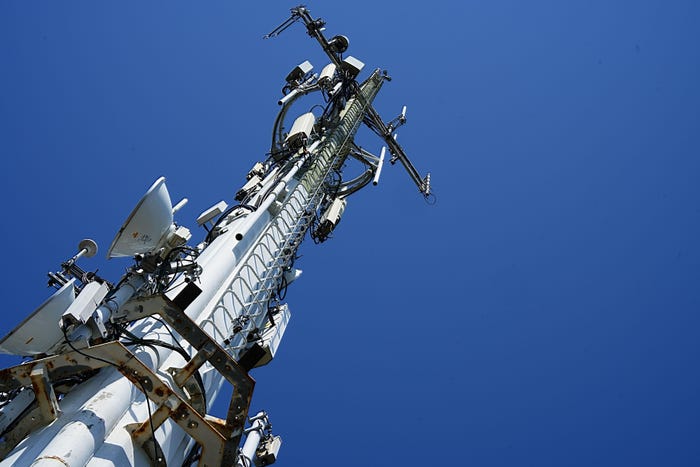OMS Group secures $292.5M loan for fleet expansion as industry grapples with cable ship shortage
Subsea services company OMS Group has secured a US$292.5 million loan to expand its cable ship fleet as the industry struggles to fill cable ship shortage amid a rapidly aging fleet.

Subsea services company OMS Group has secured a US$292.5 million loan to expand its cable ship fleet and enhance its expertise in subsea telecommunications.
Facilitated by KKR Capital Markets, the Malaysia-based company signed the syndicated facilities agreement with a consortium of financial institutions, which included HSBC, Affin Bank Affin Hwang Investment Bank, BDO Capital & Investment Corporation, E-Sun Commercial Bank and SinoPac Co.
In a statement, the group said the financing facilities will enable the company to meet the increasing global demand for robust and reliable underwater communications infrastructure. It pointed out that the financing facilities will also enhance the company's global capabilities and consolidate its position as a key player in the subsea telecommunications industry.
"The support we have received is crucial for our growth strategy. This deal not only enhances our capability to serve a global clientele but also positions Malaysia as a central hub in subsea digital infrastructure. We are excited about the opportunities this will bring, and we are dedicated to leveraging these resources to deliver cutting-edge solutions to our customers," Ronnie Lim, CEO of OMS Group, said in a press release.
In October 2023, KKR invested $400 million in OMS Group to fund the company's global expansion as well as increasing the size of its fleet of ships.
Based in Selangor Malaysia, OMS Group has been providing submarine cable installation and maintenance services for nearly 35 years. It currently operates six cable laying and repair vessels – the latest one, the CS Cable Vigilance, was launched in 2022. The company also counts two barges and three tugboats in its fleet.
The company has been involved in numerous submarine cable projects across the globe, including the SEA-ME-WE 5 Submarine Cable, AAE-1 Submarine Cable, South-East Japan Asia Japan Cable System 2 and the Australia Singapore Cable System.
Cable ship shortage
The submarine cable industry has been facing a shortage in cable ships for decades. New builds are few and far between and are easily outpaced by vessels that are being retired from a rapidly aging fleet.
According to the latest Submarine Telecoms Industry Report 2023/2024 published by the SubTel Forum, there are currently only 69 cable ships worldwide. The report noted that the number of companies that owned cable-laying ships has grown from nine to 20 over the last six years. However, the total number of cable ships in the fleet has remained relatively stable, as many of the newer entrants acquired existing vessels from established operators.
The report said three companies collectively own 34.78% of the entire cable ship fleet. Orange leads the industry with 13.04% of the total cable ships, owning nine vessels. SubCom follows with 11.59%, possessing eight cable ships. ASN and Global Marine each contribute 10.14% to the fleet, owning seven vessels apiece.
Optic Marine (part of the OMS Group) and E-Marine control the next significant share, owning 8.70% and 7.25% of the fleet, respectively. The remaining ownership is distributed among 15 companies, each owning one to four cable ships.
The report pointed out that 2023 was a pivotal moment in the submarine telecommunications industry, with the launch of several significant cable ships. This development, it added, reflects a unified effort by key industry stakeholders to enhance their capabilities and meet the rising demand for robust communication infrastructure.
Besides Optic Marine's CS Cable Vigilance launched in 2022, SubCom added a new cable-laying vessel to its fleet although the exact date of acquisition is not public.
ASN started a strategic vessel acquisition program in late 2021, involving the purchase of two ships: the Ile de Molene and the Ile d’Yeu. The Ile de Molene was successfully retrofitted and launched in 2022 while the Ile d’Yeu was launched into service last year.
Orange Marine launched the Sophie Germain, a cutting-edge cable ship specifically designed for maintaining submarine cables. The ship is now in service, replacing the Raymond Croze. Meanwhile, S.B.S.S. introduced the Fu Tai vessel in February 2022, replacing the quietly retired Fu An from the previous year.
"The ongoing conversion of the Ile d'Yeu, along with Orange's addition of the Sophie Germain, promises to elevate operational capabilities and efficiency" the report said.
Aging fleet remains a challenge
Mike Constable, principal at Infra-Analytics, said in a recent interview with TeleGeography that an aging fleet is still the major challenge for the industry.
"We have an aging vessel fleet with no sustainable replacement solution because the prevailing commercial models just don't work to raise finance for new-build investment," said Constable.
He placed the total number of cable ships globally at 54, with an average age of 24 years. Approximately 30% (16 vessels) will exceed a 40-year lifespan in the next ten years.
Seven cable ships will be coming online in Asia this year, Constable added.
"However, these assets are all small conversions (vis-à-vis new builds), are somewhat geographically constrained, some having little or no experience, and with a substantial proportion are Chinese assets – therefore geopolitically constrained," said Constable.
"Unless we as an industry collaborate to reinvent commercial models, particularly the maintenance models, replenishing the fleet will continue to be a challenge and the current inefficiencies in the global maintenance footprint will remain," he added.
Read more about:
AsiaAbout the Author(s)
You May Also Like



.jpeg?width=700&auto=webp&quality=80&disable=upscale)










